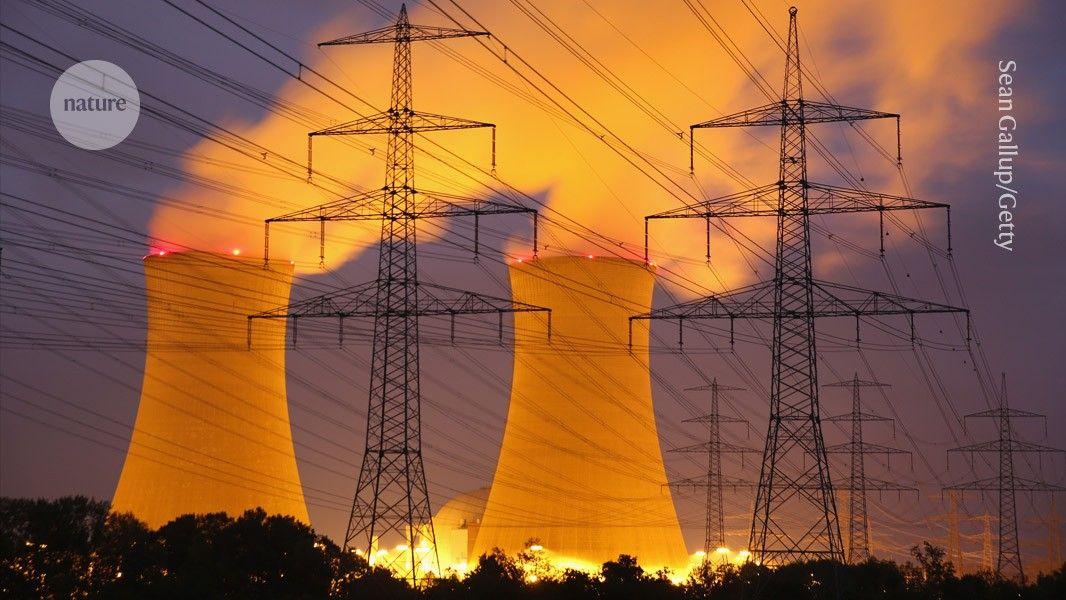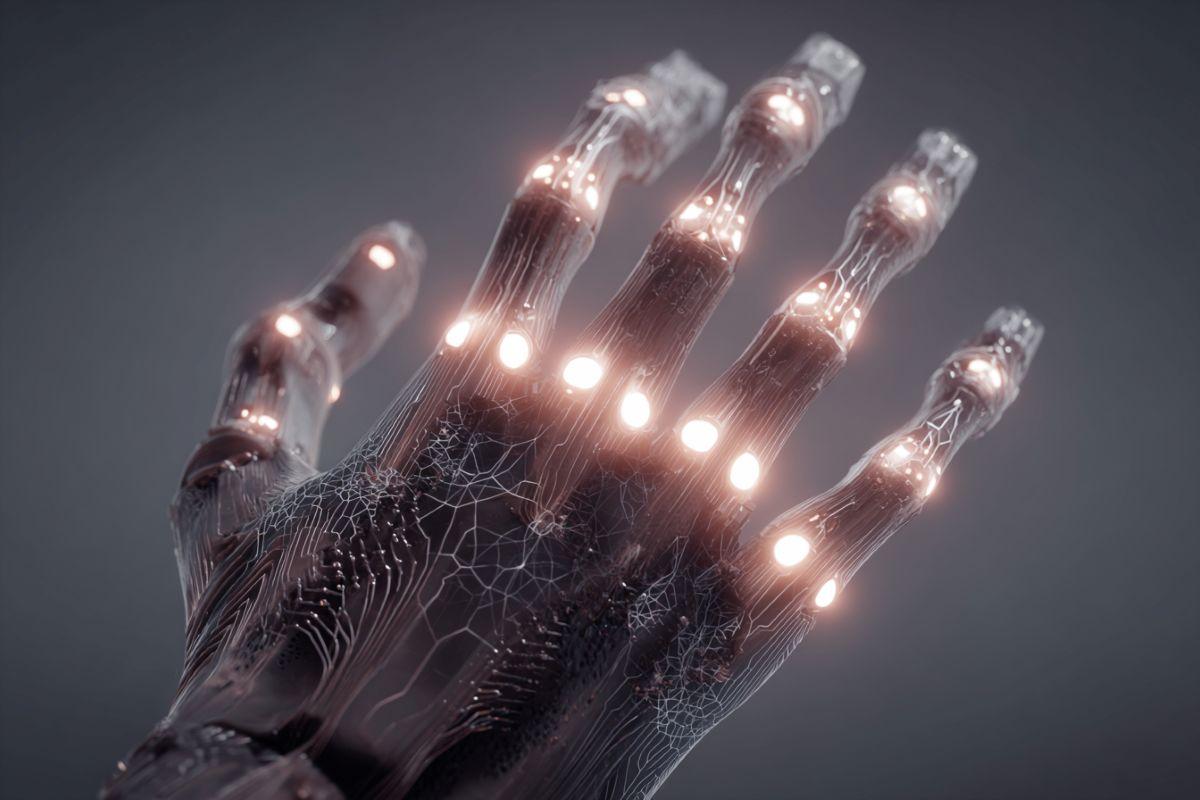Europe's Data Center Power Demand Set to Triple by 2030, Driven by AI Adoption
4 Sources
4 Sources
[1]
EU datacenter energy consumption set to triple by 2030
McKinsey warns an additional 25GW of mostly green energy will be needed Datacenter power consumption across Europe could roughly triple by the end of the decade, driven by mass adoption of everyone's favorite tech trend: AI. "In the last two decades, no technology has driven the need for accelerated power infrastructure development in Europe more than AI," analysts wrote in a McKinsey report published on Thursday. At the current rate of adoption, the consultancy estimates that European datacenter power consumption will reach 150 terawatt hours (TWh) by 2030 - up from about 62TWh today. If this actually pans out, bit barns could suck back up to five percent of the continent's electrical energy supply. McKinsey estimates that European utilities will need to add approximately 25 gigawatts of generation capacity to power all the power-hungry GPUs being pressed into service training and running generative AI models and services - and most of it is going to need to be of the "green" variety. That last detail, McKinsey analysts note, is something of a problem. "The datacenter industry faces a big challenge to decarbonize its footprint and reach net-zero targets on a 2030-40 timeline." Some, including former Google CEO Eric Schmidt, have argued that we shouldn't even be worrying about AI's energy appetite because the tech itself is our best shot at addressing growing the increasing prevalence of greenhouse gases. "We're not going to hit the climate goals anyway because we're not organized to do it," Schmidt conceded while speaking at a recent AI summit in Washington DC. Barring an AI climate salvation, McKinsey notes that renewable energy credits remain among the most popular ways cloud and datacenter operators go about offsetting emissions generated by their facilities. But the consultancy also feels that such schemes have " minimal impact on long-term emissions in power systems and rarely incentivizes the development of new projects or the generation of clean energy." One way to reduce AI's impact is to place datacenters close to locations that produce clean energy. That approach can work best when these facilities house hardware used to train models - a process that requires tremendous amounts of computational power, but doesn't need to be physically close to population centers. However, as the mix of AI workloads shifts toward inference - the actual running of the models - this will change and latency requirements will dictate the facilities be built near cities. Long term, McKinsey is tracking a number of potential remedies - ranging from carbon capture to onsite power generation using small modular reactors. As we've previously reported, such reactors have garnered a lot of attention from cloud providers and hyperscalers in recent months despite the fact none have actually been deployed commercially. Nuclear isn't the only option for onsite generation - it's just one of the cleaner and more energy-dense items on the menu. Diesel generators, fuel cells, and facility-scale battery backups are commonly employed to provide supplemental power and smooth out fluctuations in grid power. While datacenter power consumption is expected to rise, a separate McKinsey report also published Thursday suggests overall European energy demand may fall short of previous predictions. The firm believes that as much of 40 percent of the 460TWh in forecast growth may not materialize. Growing populations and gross domestic profit were expected to drive power consumption across the continent by upwards of seven percent by 2030, according to McKinsey. Despite these trends, analysts observe demand has actually slowed - in large part because of energy efficiency gains, a shift to a services-oriented economy, milder winters, and high energy costs which have driven a trend toward de-industrialization. ®
[2]
Europe's data centre power demand expected to triple by 2030, McKinsey report says
LONDON (Reuters) - Europe's data centre power consumption is expected to almost triple by 2030 and will require a big rise in electricity supply mostly from low-carbon sources, and grid infrastructure upgrades, a McKinsey report showed. WHY IT'S IMPORTANT Investment in data centres has risen over the past couple of years as digitalisation and artificial intelligence (AI) has gained momentum. This has raised questions about how countries can meet the expected rise in electricity demand which the growing number of huge data centres will create. CONTEXT According to the International Energy Agency, much of the growth in data centres will be in the United States but other economies such as China and Europe will also experience more data centre installation over the coming years. BY THE NUMBERS In Europe - the European Union, Norway, Switzerland and Britain - the total IT load demand for data centres in the region is expected to grow to around 35 gigawatts (GW) by 2030 from 10 GW today, according to the McKinsey report. Based on the current rate of adoption, Europe's data centre power consumption is expected to almost triple to more than 150 terawatt hours (TWh) by the end of the decade from around 62 TWh today. Data centres are expected to account for around 5% of total European consumption in the next six years compared to around 2% today. Meeting data centre demand will require at least $250-300 billion in data centre infrastructure investment, excluding power generation capacity, the report added. KEY QUOTE "Meeting (the rise in electricity) demand will require an extensive increase in electricity supply; a notable shift for Europe, where aggregate power demand has remained relatively stagnant since 2007," the McKinsey report said. (Reporting by Nina Chestney; Editing by Emelia Sithole-Matarise)
[3]
Europe's data centre power demand expected to triple by 2030, McKinsey report says
LONDON, Oct 23 (Reuters) - Europe's data centre power consumption is expected to almost triple by 2030 and will require a big rise in electricity supply mostly from low-carbon sources, and grid infrastructure upgrades, a McKinsey report showed. WHY IT'S IMPORTANT Investment in data centres has risen over the past couple of years as digitalisation and artificial intelligence (AI) has gained momentum. This has raised questions about how countries can meet the expected rise in electricity demand which the growing number of huge data centres will create. Advertisement · Scroll to continue CONTEXT According to the International Energy Agency, much of the growth in data centres will be in the United States but other economies such as China and Europe will also experience more data centre installation over the coming years. BY THE NUMBERS In Europe - the European Union, Norway, Switzerland and Britain - the total IT load demand for data centres in the region is expected to grow to around 35 gigawatts (GW) by 2030 from 10 GW today, according to the McKinsey report. Advertisement · Scroll to continue Based on the current rate of adoption, Europe's data centre power consumption is expected to almost triple to more than 150 terawatt hours (TWh) by the end of the decade from around 62 TWh today. Data centres are expected to account for around 5% of total European consumption in the next six years compared to around 2% today. Meeting data centre demand will require at least $250-300 billion in data centre infrastructure investment, excluding power generation capacity, the report added. KEY QUOTE "Meeting (the rise in electricity) demand will require an extensive increase in electricity supply; a notable shift for Europe, where aggregate power demand has remained relatively stagnant since 2007," the McKinsey report said. Reporting by Nina Chestney; Editing by Emelia Sithole-Matarise Our Standards: The Thomson Reuters Trust Principles., opens new tab
[4]
Europe's Data Centre Power Demand Expected to Triple by 2030, McKinsey Report Says
LONDON (Reuters) - Europe's data centre power consumption is expected to almost triple by 2030 and will require a big rise in electricity supply mostly from low-carbon sources, and grid infrastructure upgrades, a McKinsey report showed. WHY IT'S IMPORTANT Investment in data centres has risen over the past couple of years as digitalisation and artificial intelligence (AI) has gained momentum. This has raised questions about how countries can meet the expected rise in electricity demand which the growing number of huge data centres will create. CONTEXT According to the International Energy Agency, much of the growth in data centres will be in the United States but other economies such as China and Europe will also experience more data centre installation over the coming years. BY THE NUMBERS In Europe - the European Union, Norway, Switzerland and Britain - the total IT load demand for data centres in the region is expected to grow to around 35 gigawatts (GW) by 2030 from 10 GW today, according to the McKinsey report. Based on the current rate of adoption, Europe's data centre power consumption is expected to almost triple to more than 150 terawatt hours (TWh) by the end of the decade from around 62 TWh today. Data centres are expected to account for around 5% of total European consumption in the next six years compared to around 2% today. Meeting data centre demand will require at least $250-300 billion in data centre infrastructure investment, excluding power generation capacity, the report added. KEY QUOTE "Meeting (the rise in electricity) demand will require an extensive increase in electricity supply; a notable shift for Europe, where aggregate power demand has remained relatively stagnant since 2007," the McKinsey report said. (Reporting by Nina Chestney; Editing by Emelia Sithole-Matarise)
Share
Share
Copy Link
A McKinsey report predicts that European data center power consumption will nearly triple by 2030, largely due to AI adoption, raising concerns about energy supply and environmental impact.

Data Center Power Consumption Set to Surge
A recent McKinsey report has revealed that data center power consumption across Europe is expected to nearly triple by 2030, driven primarily by the rapid adoption of artificial intelligence (AI) technologies. The report estimates that European data center power consumption will reach 150 terawatt hours (TWh) by the end of the decade, up from about 62 TWh today
1
2
3
.AI's Impact on Energy Demand
McKinsey analysts emphasize that AI has become the most significant driver of accelerated power infrastructure development in Europe over the past two decades. This surge in energy demand is attributed to the power-hungry GPUs used for training and running generative AI models and services
1
.Projected Growth and Infrastructure Requirements
The total IT load demand for data centers in Europe - including the European Union, Norway, Switzerland, and Britain - is expected to grow from 10 gigawatts (GW) today to around 35 GW by 2030
2
3
. To meet this increased demand, European utilities will need to add approximately 25 GW of generation capacity, with a focus on "green" energy sources1
.Economic Implications
The report suggests that meeting data center demand will require at least $250-300 billion in infrastructure investment, excluding power generation capacity
2
3
4
. This significant investment highlights the economic impact of the growing AI and data center industry on Europe's energy sector.Environmental Concerns and Challenges
The data center industry faces a significant challenge in decarbonizing its footprint and reaching net-zero targets by 2030-40
1
. While renewable energy credits are currently popular for offsetting emissions, McKinsey notes that these schemes have minimal long-term impact on emissions reduction1
.Related Stories
Potential Solutions and Strategies
Several approaches are being considered to address the environmental impact of increased data center power consumption:
- Strategic placement of data centers near clean energy sources, particularly for model training facilities
1
. - Exploring onsite power generation options, including small modular nuclear reactors, fuel cells, and facility-scale battery backups
1
. - Investigating carbon capture technologies and other long-term remedies
1
.
Broader Energy Trends in Europe
Interestingly, while data center power consumption is expected to rise, a separate McKinsey report suggests that overall European energy demand may fall short of previous predictions. Factors such as energy efficiency gains, a shift to a services-oriented economy, and high energy costs have contributed to slower overall demand growth
1
.Global Context
The International Energy Agency notes that while much of the growth in data centers will occur in the United States, other economies such as China and Europe will also experience significant increases in data center installations
2
3
4
.As Europe grapples with this impending surge in energy demand, the continent faces a notable shift in its power infrastructure needs. This challenge will require extensive increases in electricity supply and significant upgrades to grid infrastructure, marking a departure from the relatively stagnant aggregate power demand observed since 2007
2
3
4
.References
Summarized by
Navi
[1]
[2]
Related Stories
Recent Highlights
1
AI Chatbots Sway Voters More Effectively Than Traditional Political Ads, New Studies Reveal
Science and Research

2
OpenAI declares code red as Google's Gemini 3 gains 200 million users in three months
Technology

3
Trump approves Nvidia H200 chip exports to China with 25% revenue cut, defying Senate concerns
Policy and Regulation








